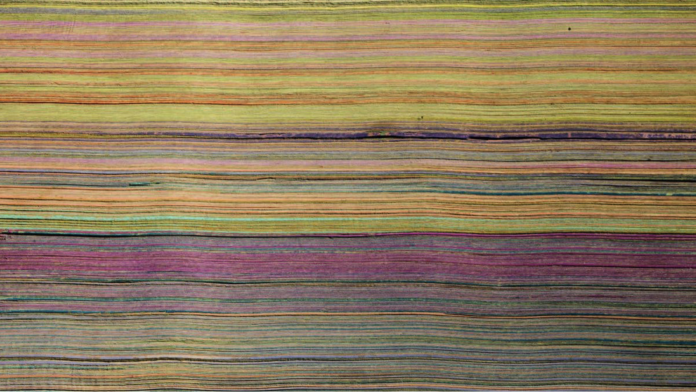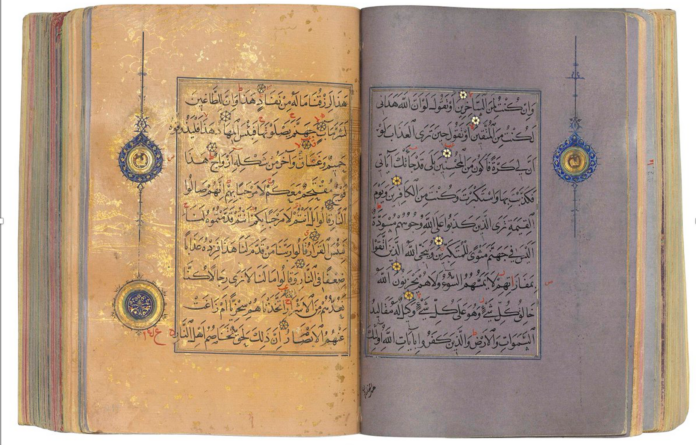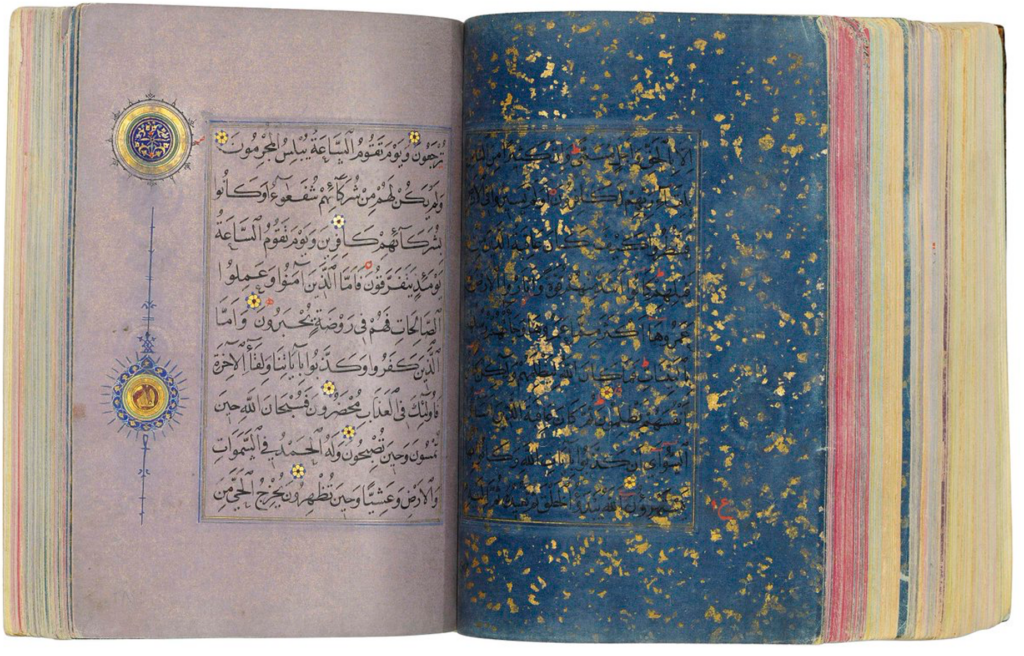By Prof. Richard T. Griffiths
Researching for the Silk Road Virtual Museum leads me to avenues that I never thought existed. Let me share this one with you. It starts at Christie’s Auction House in London. It is 25 June 2020 and we are here for its sale of Art of the Islamic and Indian Worlds Including Oriental Rugs and Carpets.
There was much interest in Lot 29 which was a copy of a fifteenth century Qur’an, printed on coloured Chinese paper and which was estimated to sell for between £600,000 and £900,000.
As always, there was a tension in the room. Most objects were going for near their estimated prices, but there were already two spectacular results. Lot 4, an early 13th century Iranian jug estimated to fetch between £50,000-70,000, was sold for over £400,000.
Lot 24, a Mamluk brass ewer, inlaid with silver and gold, which had been estimated to fetch £200,000-300,000, changed hands for almost £800,000 pounds. So, at first, no one was too surprised when the bidding for Lot 29 passed its estimate… and kept climbing.
Here is a screen shot of the moment when the bidding passed £6,000,000.
The bidding did not stop there. Agents, with telephones held to their ears, exchanged nervous glances to see who would back down first. Of course, all but one were to do so…. But not before the price reached £7,016,250 (€7,717,875 or $8,770,312)
So what do you get for that amount of money? One gets a 15th century copy of the Qur’an probably transcribed in Herat. What makes it special is the beautiful coloured paper, flecked with gold and occasionally decorated with flowers, that had been produced in China. Each of its 534 folios are dyed in rich hues of deep blue, turquoise, pink, purple, orange, green, yellow and cream. Look at the Qur’an from its side and this is what you see:
The kaleidoscopic variety was meant both to honour God in all His infinite variety and to evoke a pleasurable aesthetic response in the worshiper.
The use of coloured paper in the Islamic world was not new but Chinese paper, with its luscious finish, vibrant colours and exotic designs, had a special attraction. And because the paper had been permeated with white lead, it has a silky texture which made it soft to handle.
We still don’t know the exact formula with which the paper was permeated and dyed. There are only four known versions of this paper in the world none of which is as ornate as this.
So, you ask yourself, where does the book come from and where can you go to see it? Well, that is where we have a small problem. Usually, you would expect a beautiful volume like this to have passed through the hands of kingly courts and famous libraries, or even rich private owners.
However, the only provenance given by Christie’s for this Qur’an was that it was bought by the vendor’s father in London in the 1980s. And the vendor’s identity is not revealed. You might think that this is not very satisfactory, but for Christies it was more than enough. The statement means that the Qur’an was already in London in the 1980s, and since we know nothing of its previous history, it automatically falls outside the 1954 Convention, designed to protect cultural items in times of war, and the 1970 UNESCO Convention which banned the illicit trafficking of cultural property. You might suspect that something is wrong, but without proof there is absolutely nothing you can do.
Let us now turn to the second question was – where can you go to see it? The first answer that you can’t. The identity of the purchaser is also a secret. He or she can peruse it at their leisure, until it presumably re-emerges onto the art market. At a second level, the answer is that there is a good chance that no one will ever see it intact again. A dealer will most likely dismember the book and sell it folio by folio.
Let us take a look at the economics. We have paid over seven million pounds for a book with 534 folios. That comes out at a little over £13,000 pounds per folio. On 24 October 2019, at another sale of Art of the Islamic and Indian Worlds Including Oriental Rugs and Carpets, Christie’s auctioned two folios from a Timurid manuscript, dating from 1465. One depicted the prophet Mohammed arriving at the second heaven, of pearls, the second showed the Angel of Death. The two, together, sold for £848,750. pounds. As for the provenance of those two pages – they had been sold privately by Christie’s before, in 2016 – so that was OK.
Looked at in this way, it is easy to appreciate why you don’t have to sell many of the pages to recoup your seven million pounds. As long as unscrupulous dealers are willing to dismember intact folios and equally avaricious collectors willing to part with vast sums to own the fragment, and auction houses more than willing to take their commission from vendors and buyers alike, we will continue to see more and more of these volumes filleted for private consumption.
It is not much of a compensation, but fortunately, you can download images of all the pages at the address shown here:
https://www.dropbox.com/sh/j9mq9232ih7fig6/AAAhuQJe9JfRSu6uRPas4fAUa?dl=0









